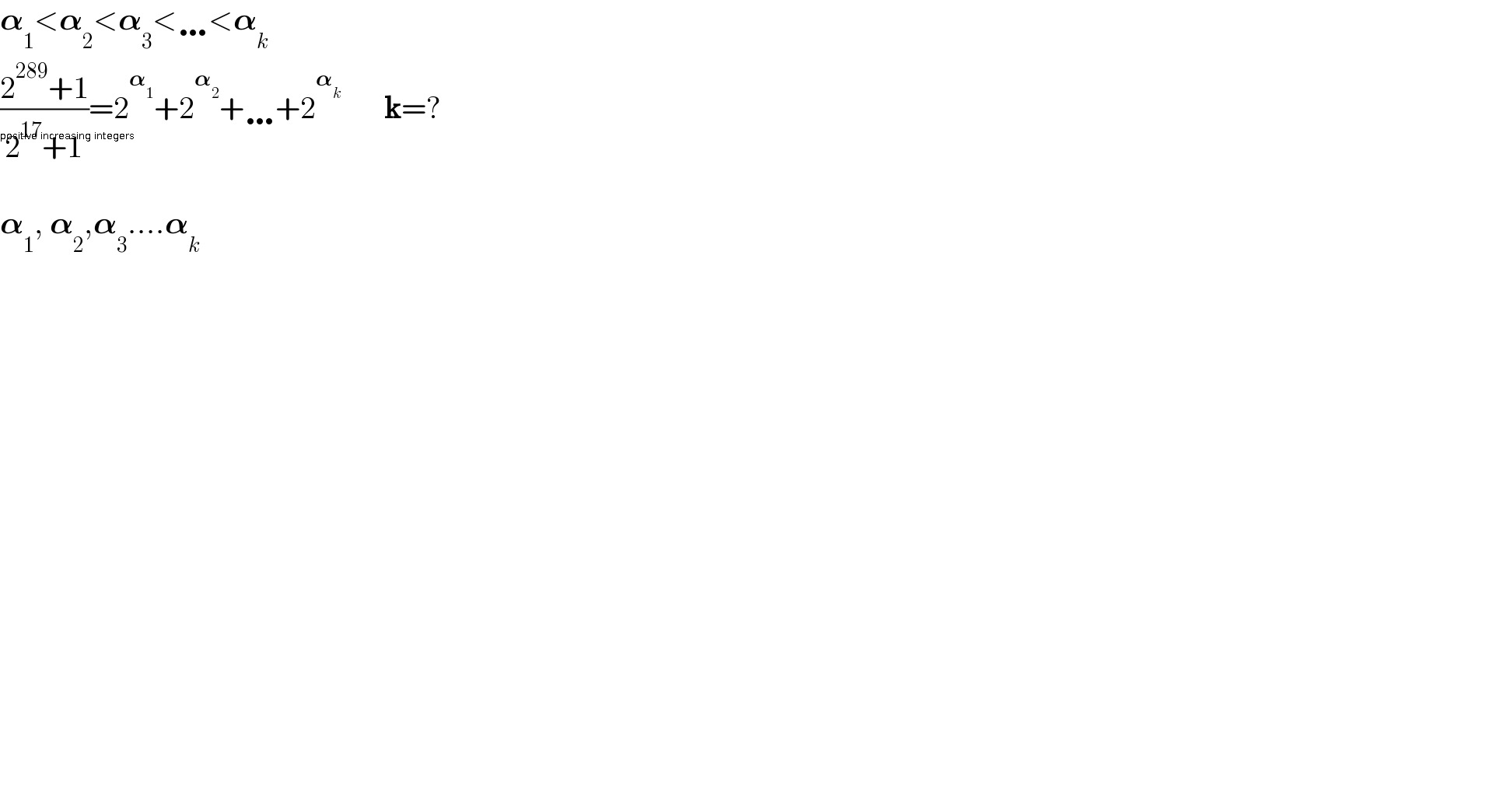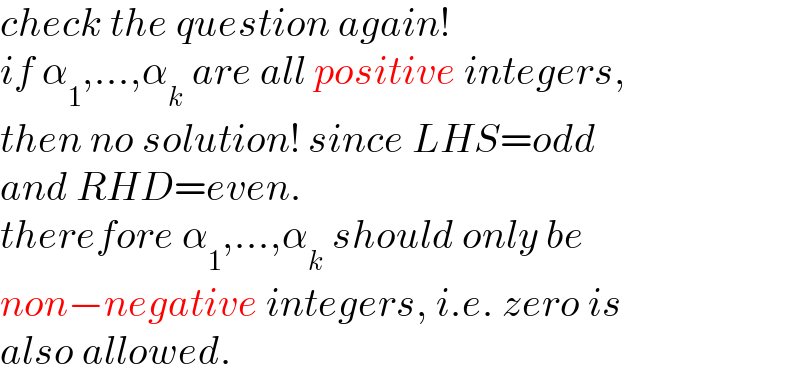
Question and Answers Forum
Question Number 162552 by amin96 last updated on 30/Dec/21

Commented bymr W last updated on 30/Dec/21

Answered by mindispower last updated on 30/Dec/21
![289=17^2 X^(17) +1=(X+1)(X^(16) −X^(15) +.............+1) ⇔X=2^(17) (((2^(17) )^(17) +1)/(2^(17) +1))=Σ_(k=0) ^(16) ((−1)^k 2^a_k ) a_k =17k,∀k∈[0,16]](Q162566.png)
| ||
Question and Answers Forum | ||
Question Number 162552 by amin96 last updated on 30/Dec/21 | ||
 | ||
Commented bymr W last updated on 30/Dec/21 | ||
 | ||
Answered by mindispower last updated on 30/Dec/21 | ||
![289=17^2 X^(17) +1=(X+1)(X^(16) −X^(15) +.............+1) ⇔X=2^(17) (((2^(17) )^(17) +1)/(2^(17) +1))=Σ_(k=0) ^(16) ((−1)^k 2^a_k ) a_k =17k,∀k∈[0,16]](Q162566.png) | ||
| ||